
DEEP INTO THE COMMUNITY
Black Diamond Athlete Angela Hawse is a guide for change.
Tu as un compte ?
Connecte-toi pour passer à la caisse plus vite.
You're eligible for Free Shipping!
$0.00 USD
mercredi, décembre 20, 2023

L'aluminium est plus léger que l'acier
Quand les ice screws en aluminium ont débarqué pour la première fois, l'attrait d'un dispositif plus léger a poussé de nombreux grimpeurs à tout changer. Pour un rack complet de 14 ice screws, tu peux économiser jusqu'à 800 grammes. C'est un sacré poids, surtout quand ils pendent de ton harnais lors d'une voie d'escalade raide et technique, ou quand ils se retrouvent sur ton dos pour une approche de cinq heures.
En fin de compte, cela signifie que tu pourrais apporter plus de nourriture, plus d'équipement, ou cette énorme belay parka, ce qui pourrait te mener à plus de succès et moins de galères. Mais, à part le poids, quelles sont les autres différences de performance entre les ice screws en aluminium et en acier?
Les vis à glace en aluminium et en acier, de 13 cm ou plus, sont certifiées CE et répondent à l’exigence EN 568:2015 de résistance radiale de 10kN (2248 lbf). Bien que les vis à glace en acier courtes de 10 cm ne soient pas certifiées CE, elles répondent aussi à l’exigence de 10kN de résistance radiale. Pour te donner une idée, imagine que ton pote Ken pèse 225 lbs quand il est chargé de tout son matos. Une vis à glace bien placée est conçue pour supporter 10 Kens. Il est difficile de générer une telle force dans la plupart des scénarios d’escalade réels.
Les vis de glace elles-mêmes sont très solides, mais elles reposent sur le soutien de la glace environnante, qui peut être très variable, surtout en surface. Dans une pose standard, avec la vis placée à un angle légèrement positif (la pointe plus haute que le support) et le support au ras de la glace, une charge appliquée va exercer une pression sur la glace qui entoure la vis et finir par provoquer sa rupture. La glace de surface se fissurera sur environ 3 à 5 centimètres de profondeur autour du corps de la vis. Une fois cela arrivé, la section exposée du corps de la vis se retrouve en porte-à-faux et n'est plus soutenue par la glace. Le corps de la vis en porte-à-faux, incapable de supporter seul la charge, va commencer à se plier jusqu'à ce que le support se détache de la tête, que le corps de la vis cède, ou que la vis se retire de la glace.

Material Properties
Anyone who has climbed enough ice knows that not all ice is created equal, and you must often excavate good placements. However, sometimes this can be extremely difficult. A lot of the ice we climb isn’t perfect, nor is our judgement of ice quality. As mentioned in the QC Lab article on "Screwtrusion" if you unintentionally or knowingly place a screw in marginal ice (bad idea but happens sometimes) then a steel screw may be safer as it can handle higher peak loads in the event of “screwtrusion”.
As the ice screw is only as strong as the surrounding ice, placing a screw into less than perfect ice may cause the ice to break down and cone out at much lower loads which leads to an unsupported and cantilevered screw body. This is where the material and geometry make a significant difference.
Without getting too in the weeds, steel has higher ductility and toughness than the heat-treated aluminum used for ice screws. This basically just means that the steel screws can and do bend/deform more than aluminum screws before failure.
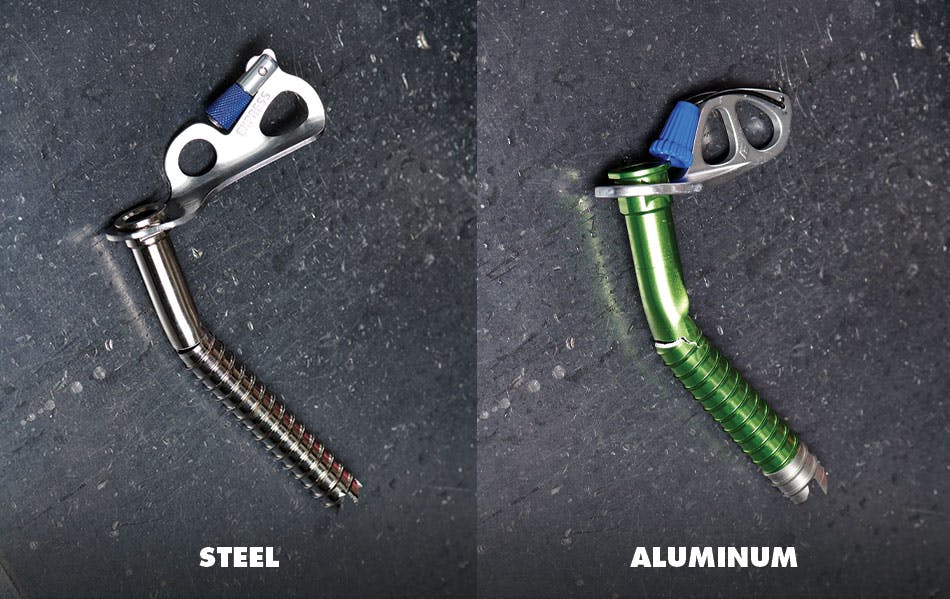
Design Priorities
This doesn’t tell the whole story though. Geometry and design priorities play a huge role in this discussion. When Black Diamond designed the steel Express ice screw many moons ago, the priority was to make a robust and durable work horse. Whereas the aluminum BD Ultralight (UL) ice screws were designed to be just that … ultralight. Both ice screw designs meet the 10kN strength requirements of course, but the design priorities are different—right tool for the job sort of thing.
One obvious example of the geometry differences is the the diameter of the screw bodies. As aluminum is a weaker material, the diameter of the UL ice screw is larger to maintain the strength required to pass the CE requirements. The larger diameter can be an advantage when placing rebored screws. It can also make it easier to line up the holes when drilling naked threads and the larger diameter holes make it less likely that the rope will get stuck when pulling your rope.

At the end of the day, the steel Express screws are just more durable and stronger, especially when a section of the body is left unsupported. The steel screws are roughly 60% stronger when subjected to large bending loads. Lab test results show that steel screws can withstand forces up to 7kN higher than aluminum screws when fully seated in perfect ice.
We often get caught up on what is strongest, but it’s worth remembering that a load of over 7kN is hard to generate in most real-world falls when there is a dynamic rope in the system. In MOST real-world scenarios, both aluminum and steel screws are strong enough, but ultimately there is more buffer with burlier, though heavier, steel screws.
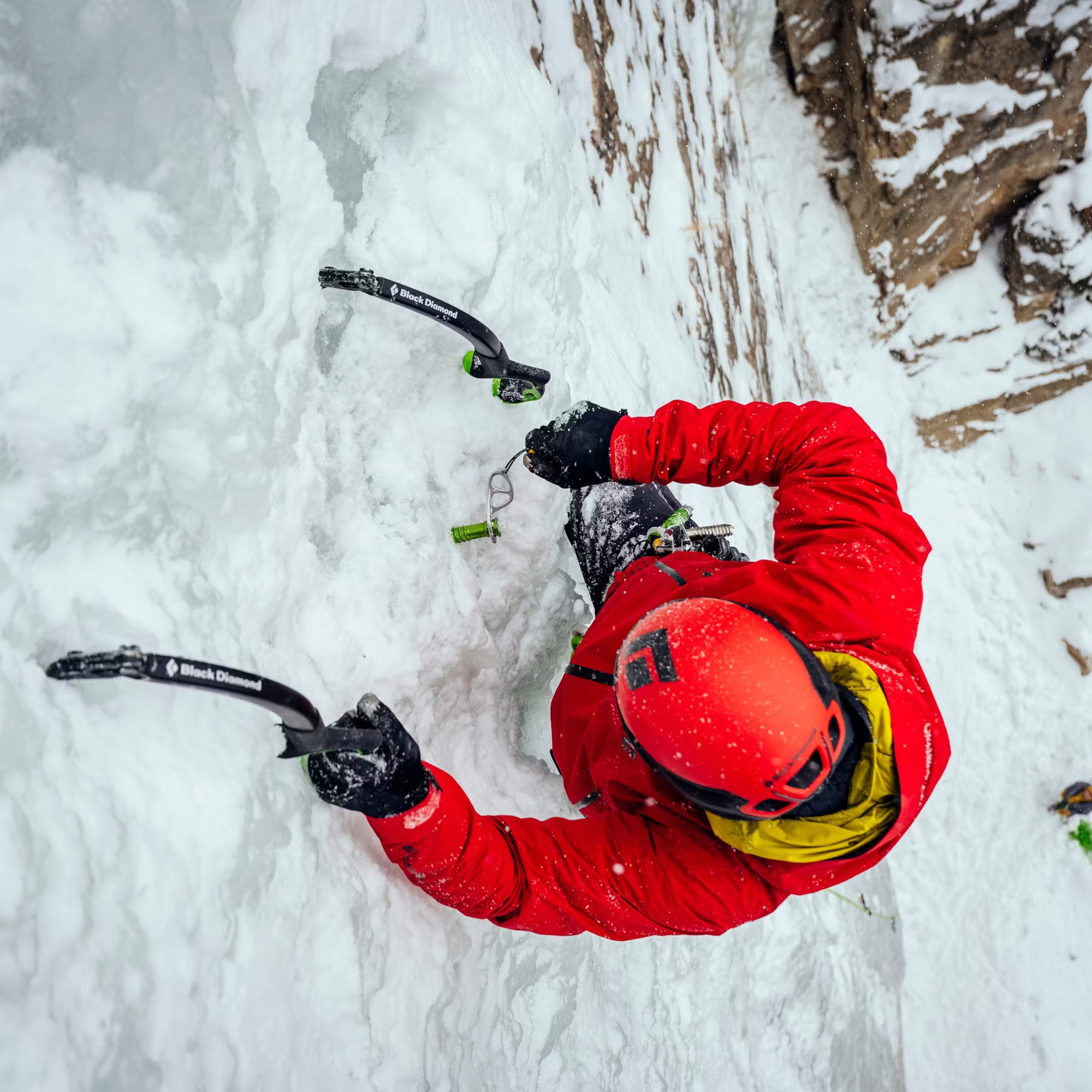
Evaluating Ice
First, search for that nice homogenous, blue, plastic ice. Then, when placing the screw, pay attention to how much torque is required to turn the screw. You will generally feel consistent resistance during a placement in good ice. If you feel any significant reduction in the torque required to drill the screw, you may have hit a weak layer or an air pocket. If it’s taking a little force to turn the screw and that force is consistent all the way until the hanger meets the carefully cleaned surface ice, then we likely have a very good screw. Good screw placements also generally produce a core during placement.
Ice Quality
If the surface has been hit with sun, heat, or has lost density through sublimation (big word for what happened to your ugly white ice cubes in the freezer after a few months) then it is a lot weaker and will fracture more easily which increases the likelihood of relying on a cantilevered screw body. So, make sure to clean any weak surface ice off before placing your ice screw!
Ice Thickness
Gauge the thickness of the ice. You want to be able to bury the screw to the hanger into good ice without the threads banging into the rock and damaging your screw. And of course, ideally you don’t want the screw protruding from the ice (see screwtusion).
Wet Ice or Very Cold Ice
Aluminum screws tend to bind more on very cold days, or in ice with layers of different temperatures (really wet ice).
At the end of the day, when faced with the situation of placing an ice screw in sub-optimal ice conditions you should search elsewhere to find a better placement. You may have more buffer with a steel ice screw but relying on ice screws in marginal ice is not a good strategy. Taking the time to get good screw placements is very important! The best option, whether you are using steel or aluminum, is to get down to that nice blue plastic ice we all love to see.
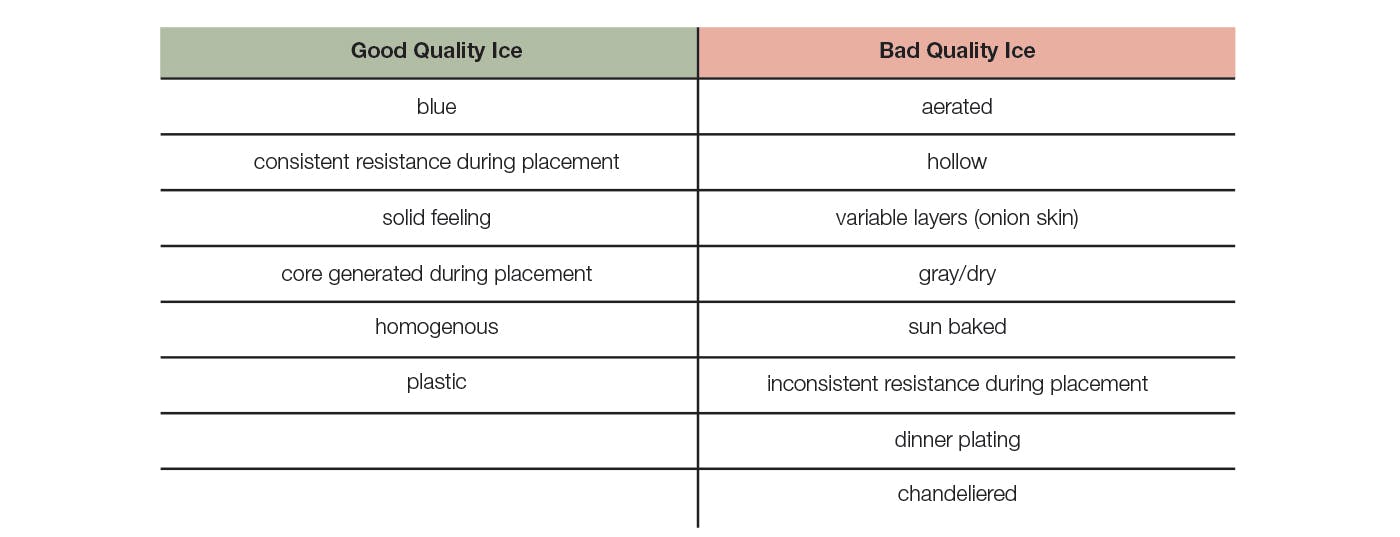
Real World
It is our responsibility as climbers to choose the best tools for the job and know the limitations of our equipment.
Many people here at BD, including myself and athletes like Will Gadd, use a mixture of aluminum and steel ice screws depending on the objective. This way you can make use of the advantages both models offer. Reboring? Break out the aluminum ice screw with the larger outside diameter. Drilling threads with your 23cm screw? Bring the aluminum screw to make lining up those holes easier and save the weight. Heading out for a glacier walk? Bring those aluminum screws and save some weight. Heading out on a remote backcountry mission where weight is king? Aluminums all the way.
Dealing with a bunch of questionable ice? Break out that steel screw to increase your margins or better yet, ask yourself if climbing the route is worth it. Knowing when to back off rather than risking a fall onto marginal gear is crucial for staying safe in the mountains.
Bottom line:



Follow BD Athlete Yannick Glatthard deep into the Swiss Alps as he shares his home...
Follow BD Athlete Yannick Glatthard deep into the Swiss Alps as he shares his home mountains with close friends.

Follow Dorian Densmore and Mya Akins for another winter season of steep Alaskan spines, backyard...
Follow Dorian Densmore and Mya Akins for another winter season of steep Alaskan spines, backyard couloirs, and deep adventures in the mountains.


Watch BD Athlete Alex Honnold throw down on some hard trad high above Tahoe.
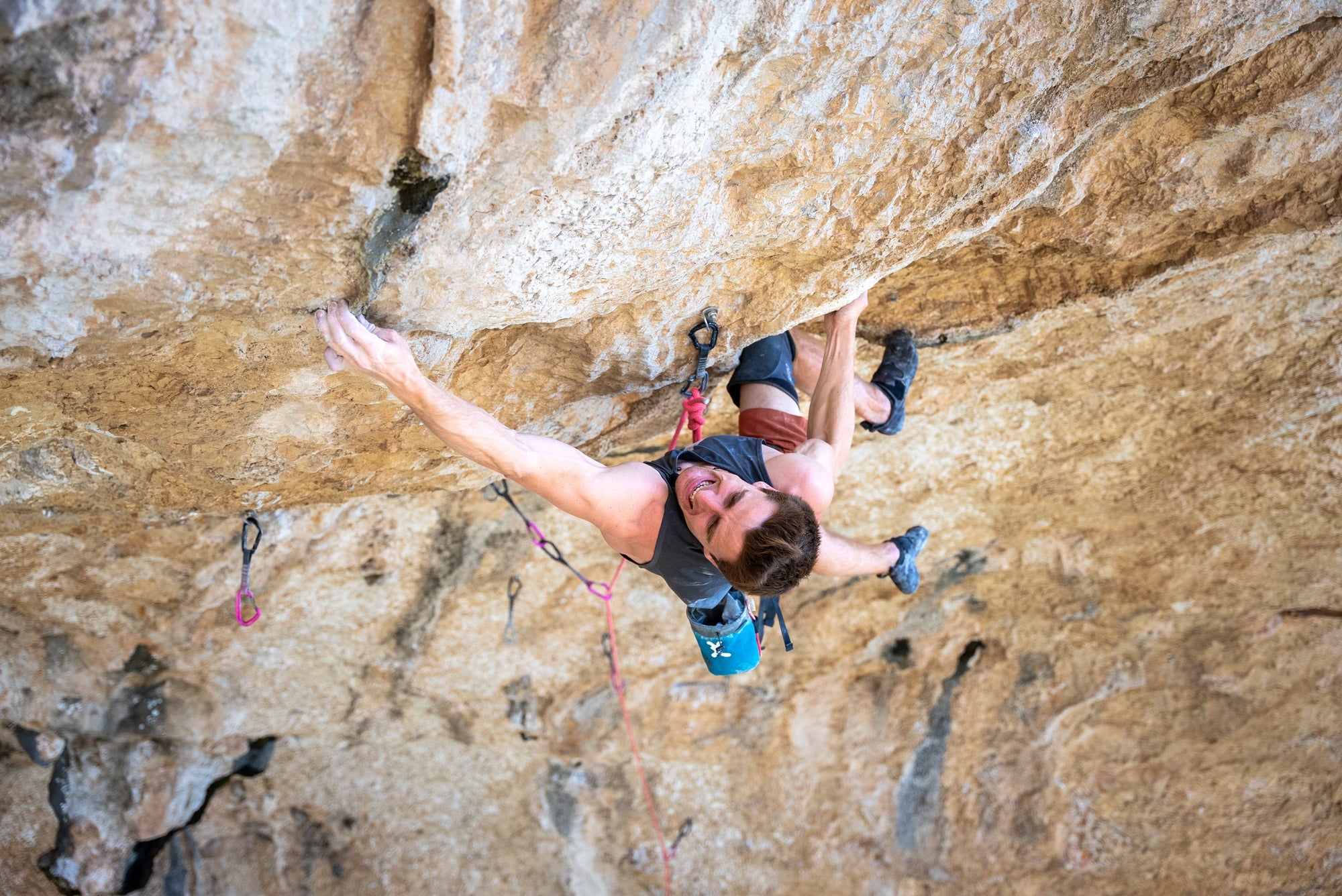

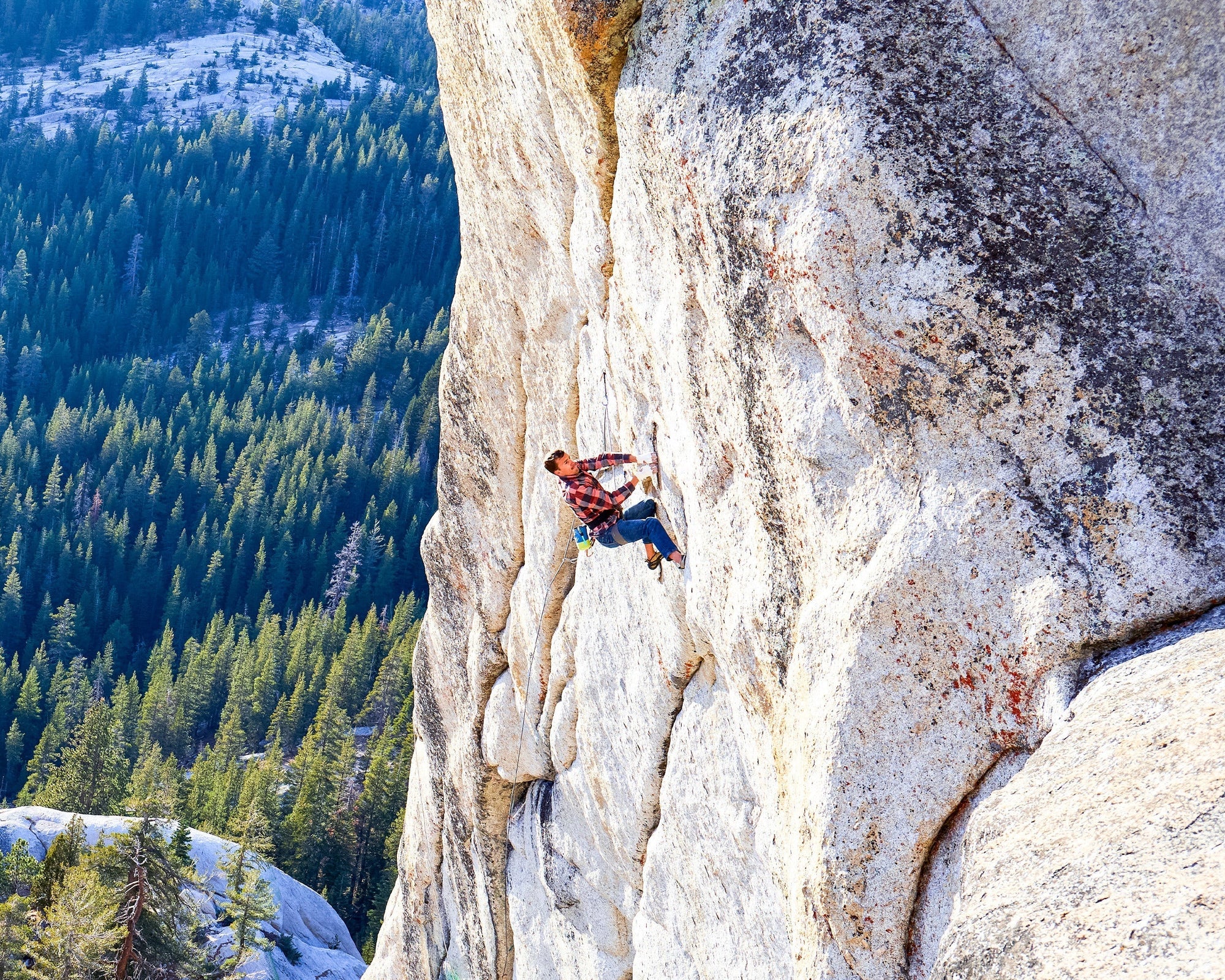
In 2012, filmmaker and photographer Ben Ditto, and professional climber Mason Earle equipped an immaculate...
In 2012, filmmaker and photographer Ben Ditto, and professional climber Mason Earle equipped an immaculate line in Tuolumne’s high country. But their attempts to free the route were thwarted when Mason’s life changed drastically. With the help of Connor Herson, Ditto and Mason found a way to keep the dream alive.
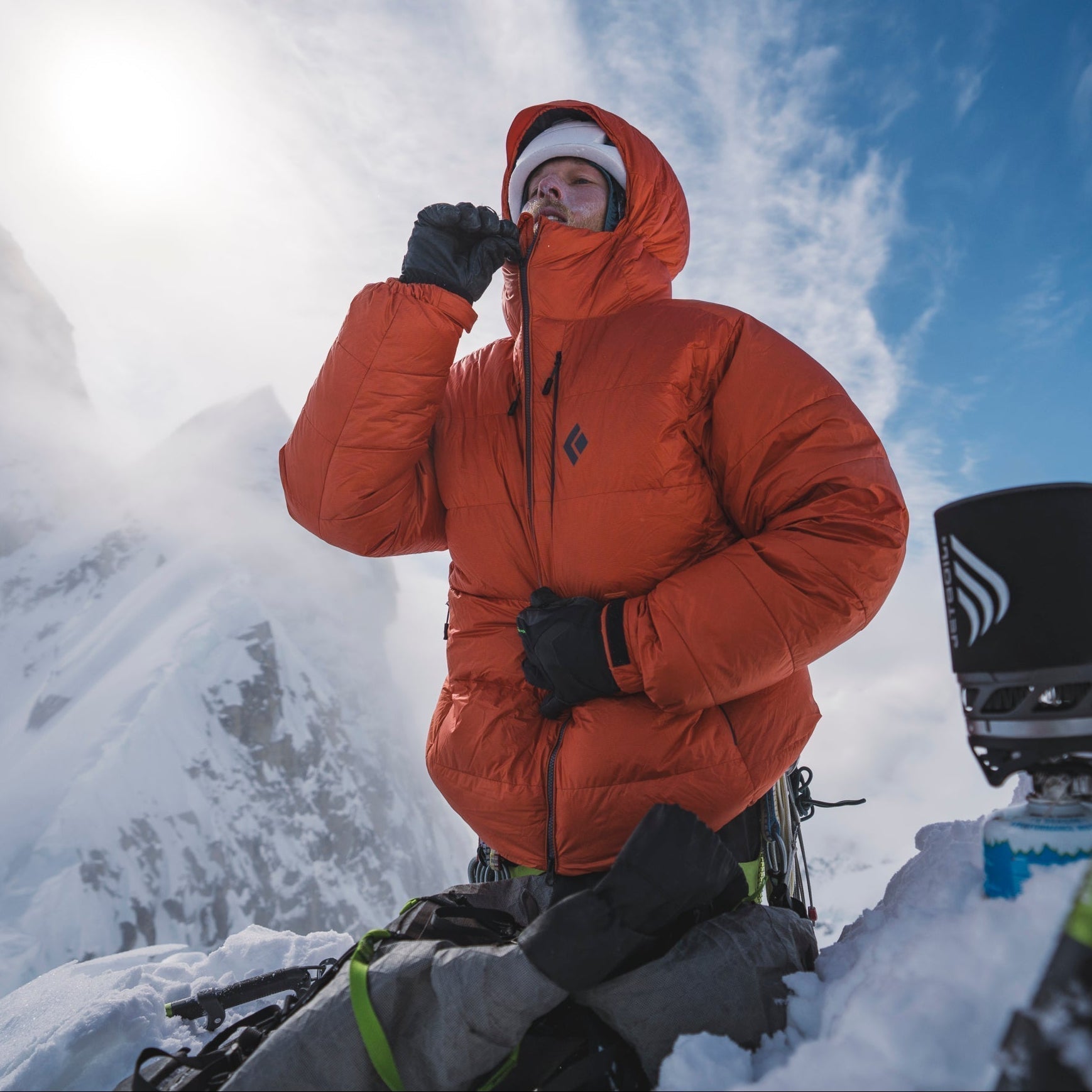

Watch and learn as our Field Test Coordinator runs you through a step by step...
Watch and learn as our Field Test Coordinator runs you through a step by step process of trimming and setting up any STS-style Black Diamond skin.


Every climber has a few lines they dream about. Whether inspired or haunted—or sometimes both—these...
Every climber has a few lines they dream about. Whether inspired or haunted—or sometimes both—these lines can push us beyond what we thought we were capable of, in turn teaching us who we really are. BD Ambassador Ethan Salvo recently restructured his entire life to focus on two climbs that pulled him into the void with only one way out … getting to the top. This is his story of sending Dreamcatcher and becoming the first Canadian to climb V16 in the same week.

BD Athlete Connor Herson spent as many weekends as possible in the Valley this spring...
BD Athlete Connor Herson spent as many weekends as possible in the Valley this spring during a grueling quarter at Stanford. The objective? Ground up, in-a-day ascents.
